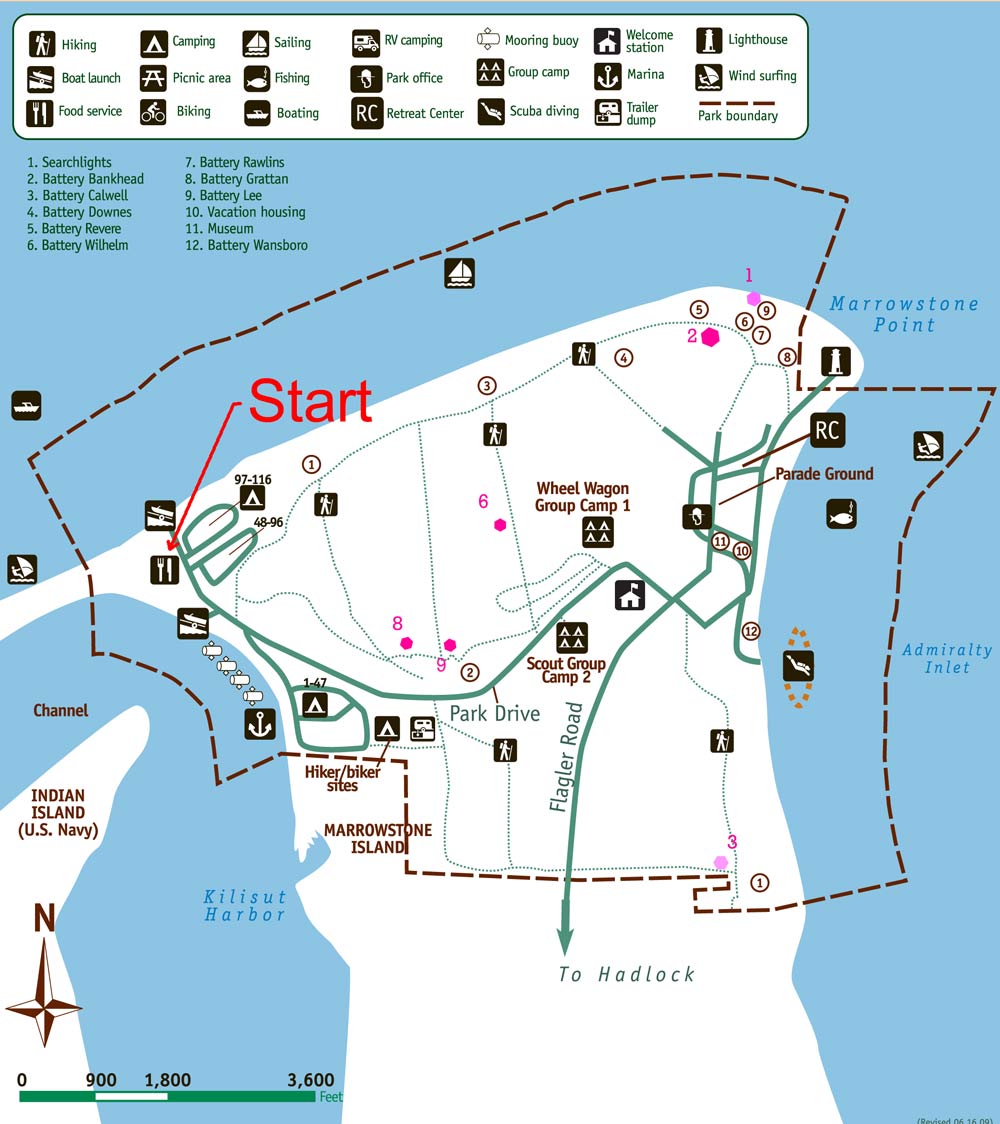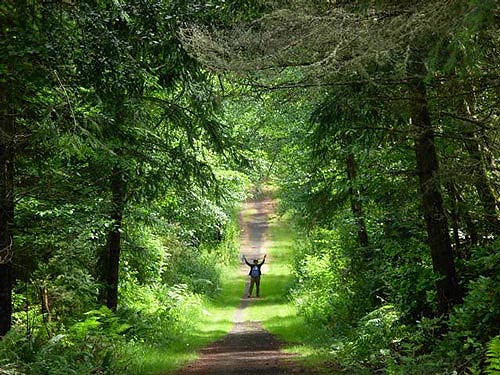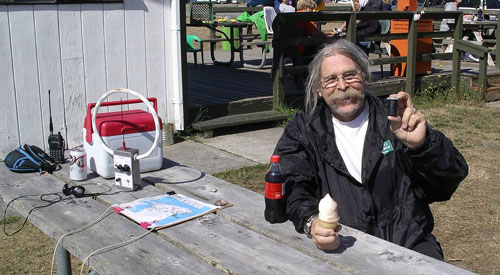
Planning and lead-up to the hunt can be viewed here.
This was billed as an intermediate 2 meter and 80 meter hunt.
All attendees but two were experienced and this was a
good match to the participant skills. Transmitters were placed by
two people; KR7W,
Rich for #6
and #8 and myself for the remainder. Number 9 was 80 meters. A cash
prize was offered for the first finder of #3 which involved some
trickery.
Billed as an "on foot" hunt, it was mentioned it was OK to use a
vehicle to travel to localized areas on the available public
roads.
This was to encourage the use of triangulation before you start
"hoofing"
it. The park is relatively large at 784 acres so its easy to get
more exercise than you may have bargained for. Time limit was three
hours with transmitters 1-3 turned "on" by remote control at the
official start time..
To challenge the more experienced hunter:
Most participants began "on foot". The map below shows the placement of the 6 transmitters. Stats on each can be found on the planning page above. The nearest was 3/4 mile from the start.

The northern section of the park has 6 trails that cross from the
center to the northshore. The Start was located on the west end
and I wanted to see how participants would resolve which trail to
travel based upon early bearings. Most got reasonable bearings on
#2 but #1 was flaky. #1 was near the cliff and behind the berm of
Battery Wilhelm so there was no line of sight path. Fun with
reflections/refractions. Also confusing was that some
didn't think I would put two foxes as close together as I did,
separated by maybe 300 yards.
I took the two beginners with me to try to localize #6 and #8 which
were the two Rich placed. We used vehicle(s) and made
several stops along the road near Battery Bankhead. Got at least
one false reading which I suspect was due to the large
amount of concrete. Traveled to Battery Wansboro and signal
strength was way down on 6 and 8 but it pointed back to the Bankhead
location. Conclusion: Bankhead was about as close as I was going
to get the vehicle. I parked the car there and proceeded to find
#8 without trouble and then took the trail passing #9 to the
northshore. I realized that #6 was probably on the next trail to
the East so I looped around at Battery Calwell and returned on the
correct one and found #6 off the trail on an easy bushwhack.
Taking many bearings along the way and averaging them resulted in fine
tuning the final locations.
 |
Fox #3: This was the fun
one. It had the
cash prize and
trickery and drew the most attention. The IDer introduced 2 new
clues which were unknown up till the start time:
Fox #3 location was selected because no roads were near it and bearings between start and its location crossed many trails and two roads. I was hoping that this would give the hunters many decisions to make about where it might be, all the more reason to triangulate first. The nearest road was about 0.4 miles away. |
| Trail to Fox #3 | |
 |
James, KE6WHN won the cash
prize. He used his vehicle to start with but still did plenty of
walking and got a good overview of the park. He finished in a little
over 2 hours and used an attenuator that Rich, KR7W built for him. |
This was the maiden hunt for my new 80 meter receiver design.
The transmitter, 1 watt into an untuned vertical antenna was placed
about 0.8 miles from the start. Signal was weak but certainly
usable. I found that the sense circuit needed a little more work
and a better handhold as its a little heavy with a cast aluminum
enclosure. Next generation will probably be smaller and
lighter. It incorporates a "tone" signal strength indicator and I
found it works best when you're getting within 300 feet of the
fox and the RF gain is turned down.
Thank you all for attending and will look forward to seeing everyone
on the next hunt.
73's,
Neil, WA7NBF